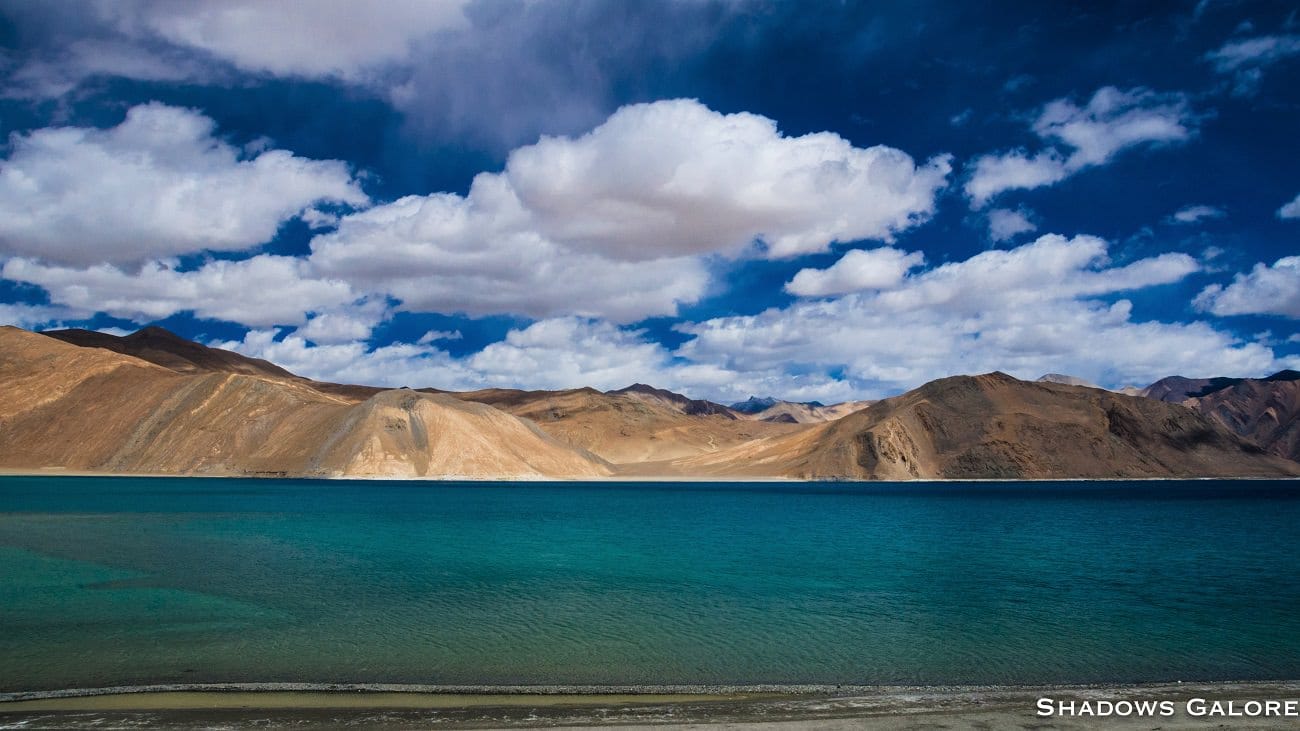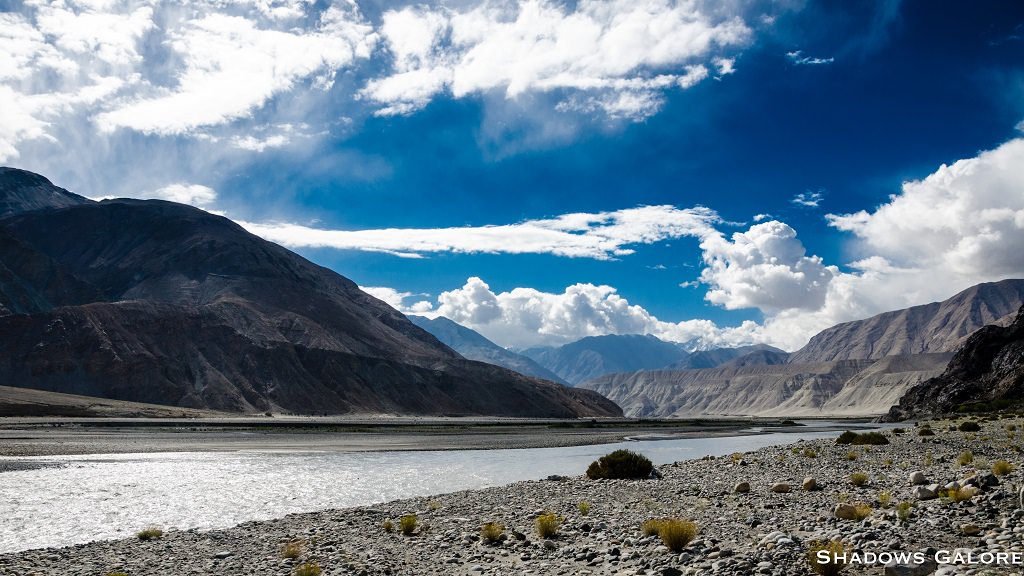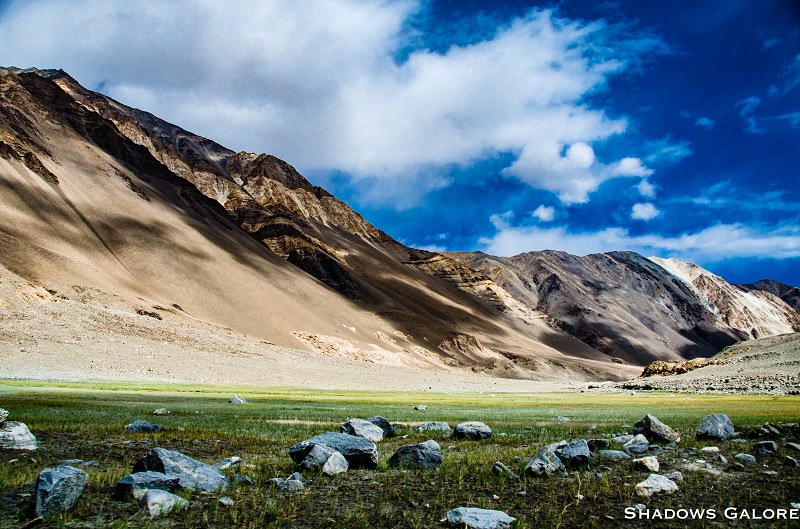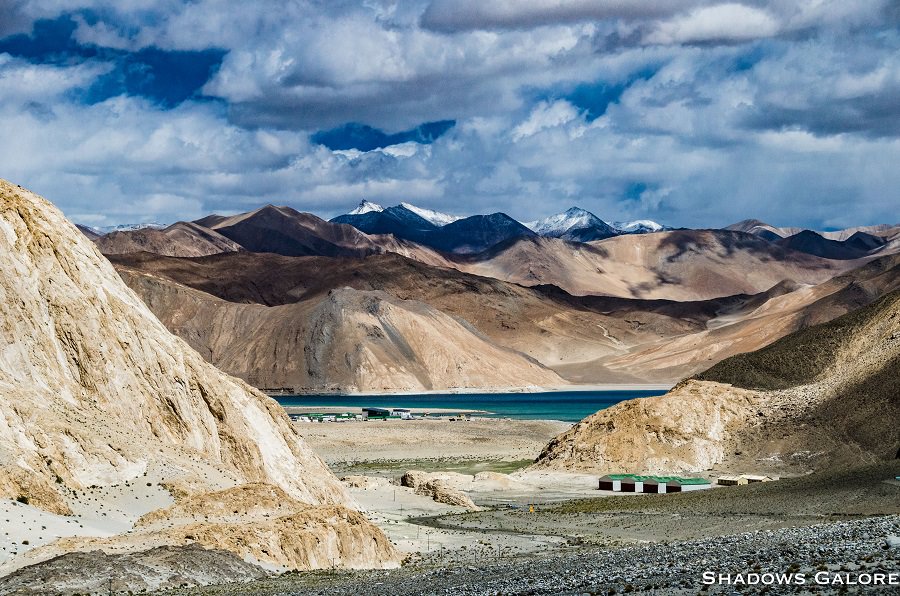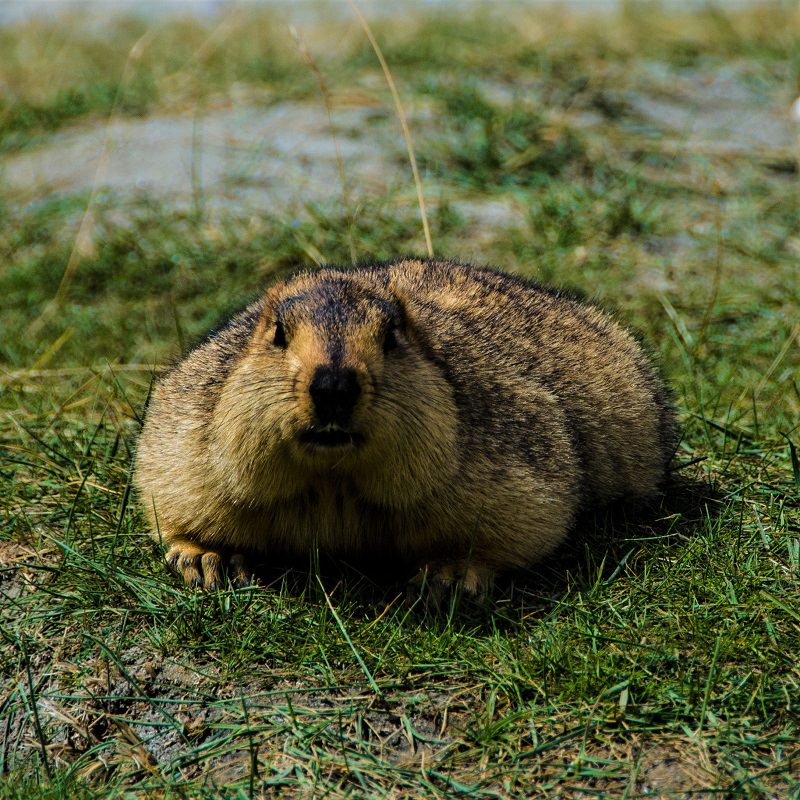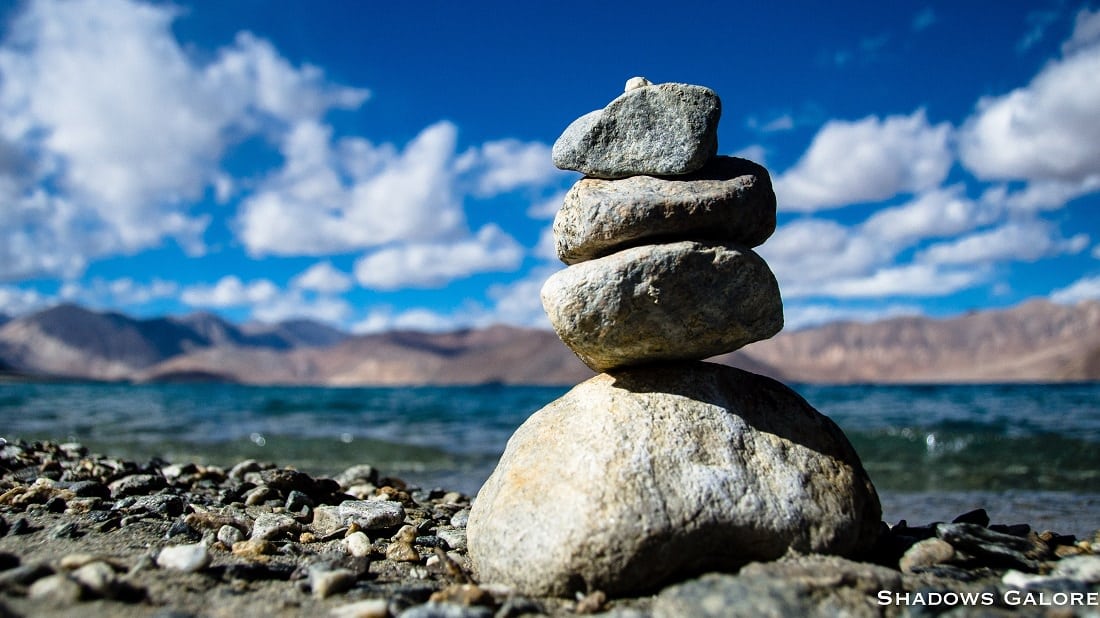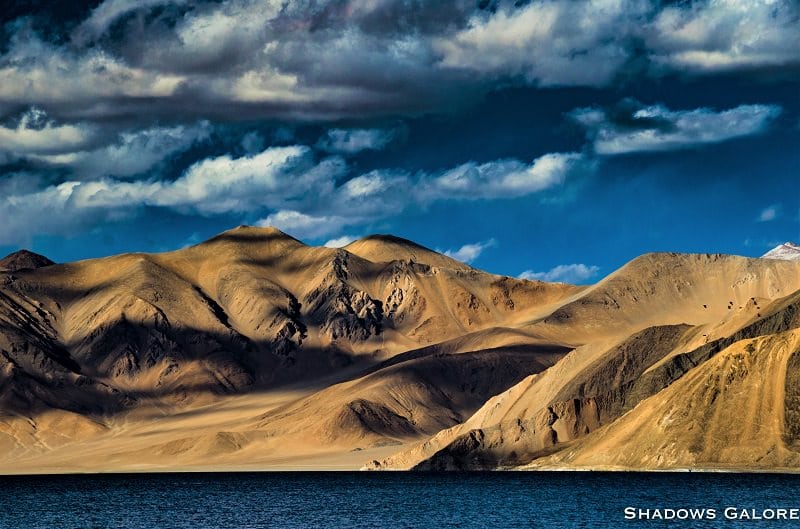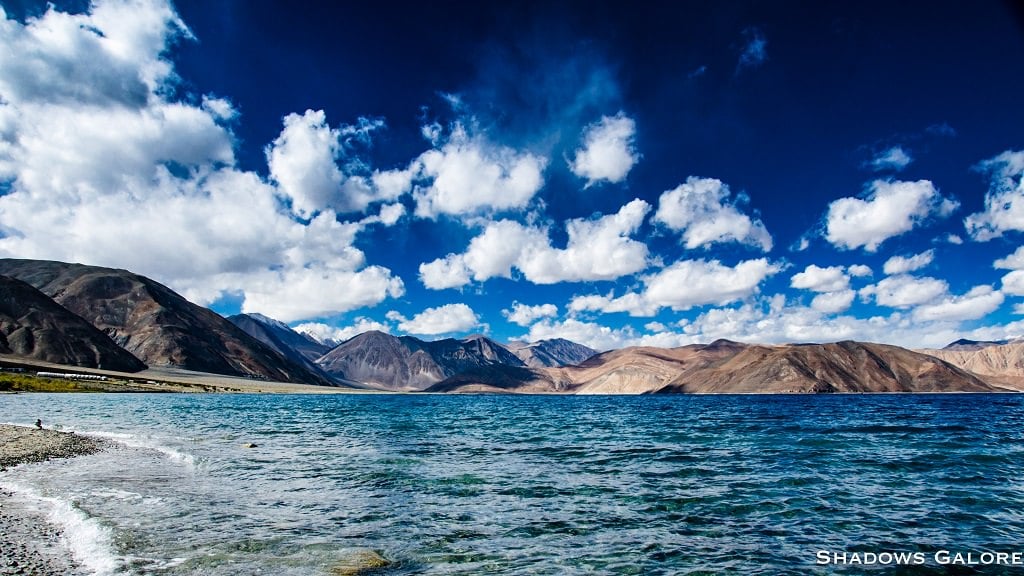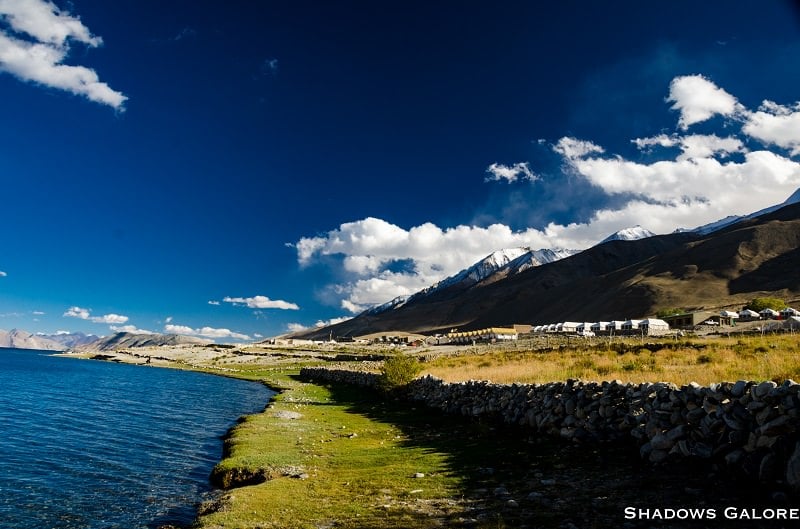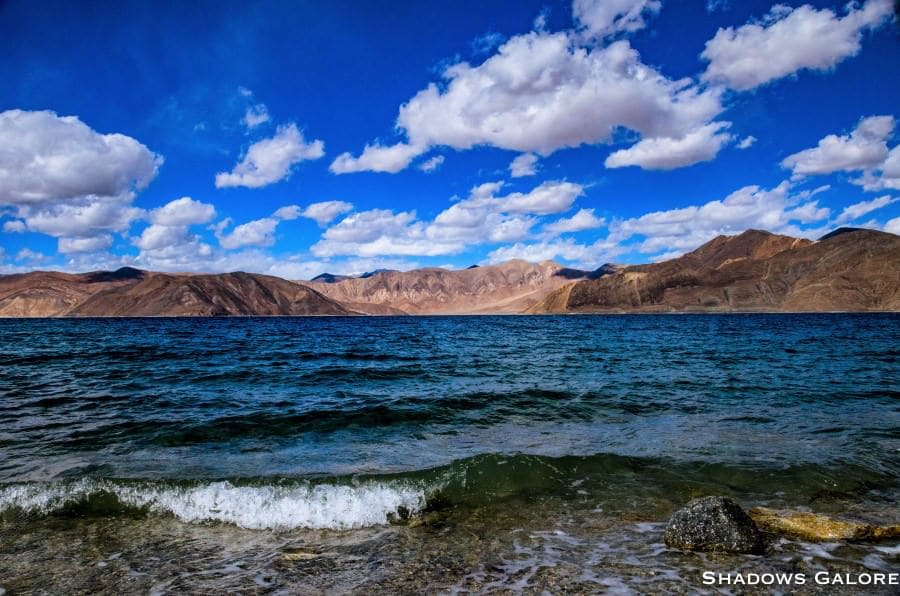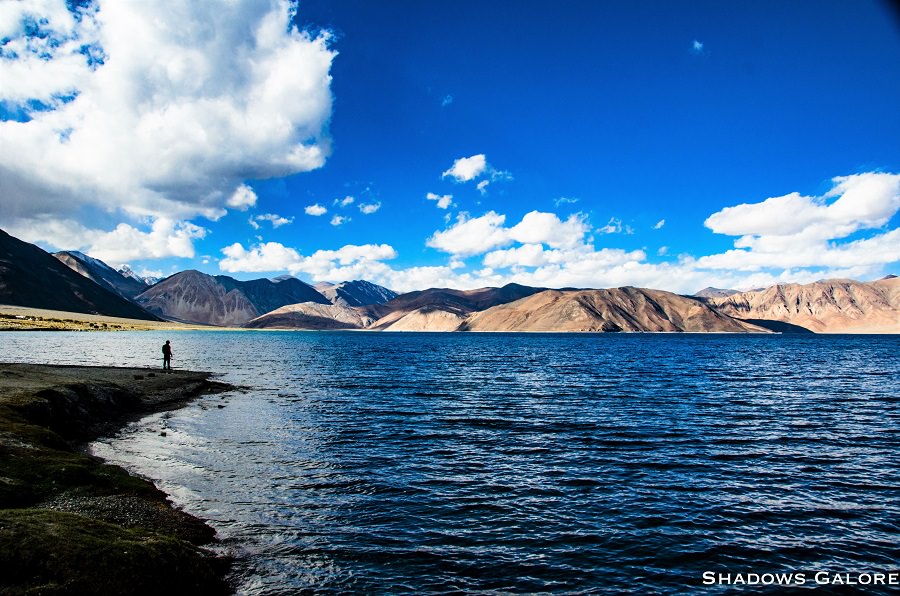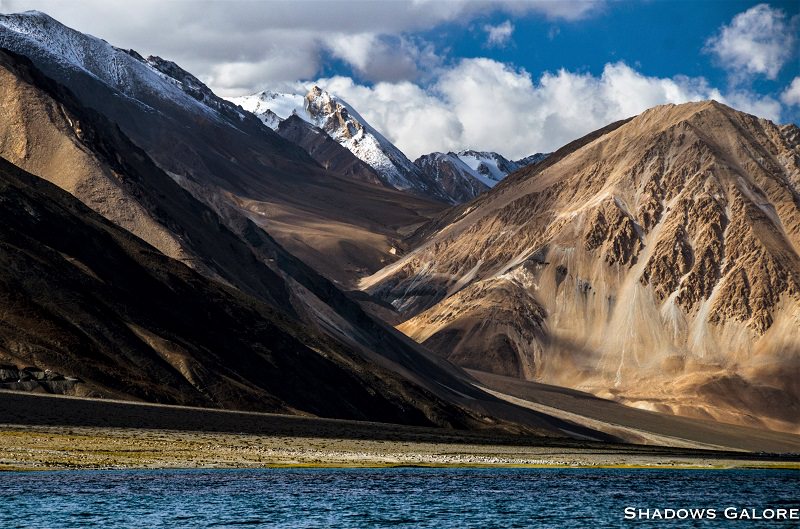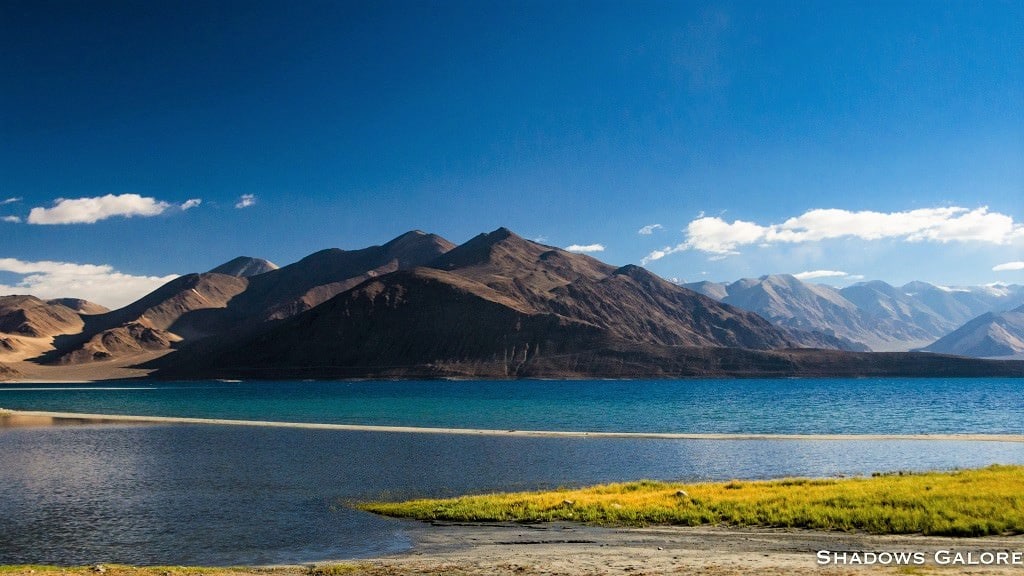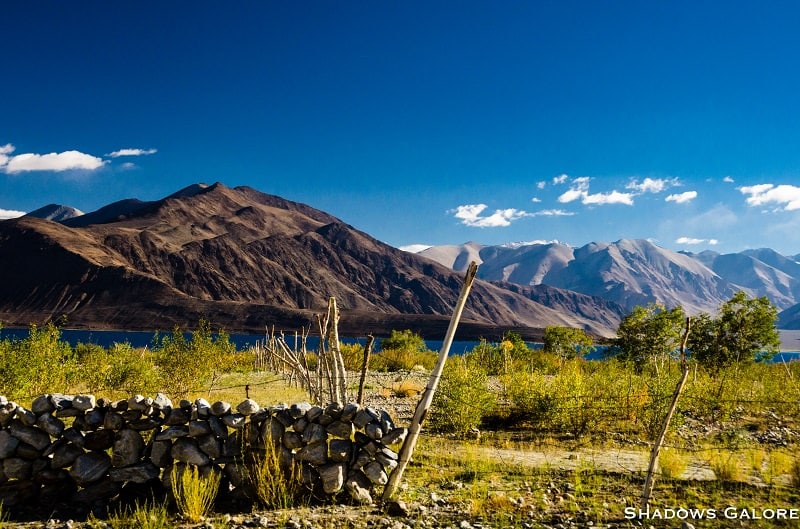“Seek the spirit of the landscape rather than merely the scenery”
– The Motorcycle Diaries
Pangong Tso (Tso: Lake) is a shock even for seasoned travellers who are veterans of expeditions to different corners of the Himalayas. As you stand on the shores of this massive lake and watch its quiet waves gently rocking the pebbles beneath your feet, look at the changing colours of the water, the mountains beyond and the sky above, you know that you are experiencing something very unusual, something that cannot possibly belong to this world. This feeling of awe, of Alice-like wonder, of a calming tranquillity, is something that this lake does to you effortlessly. At that moment, it becomes clear why Pangong Tso is considered sacred; for if this lake is not sacred, then what in the world is?
The Road to Pangong Tso
Like every other day, we started early right after breakfast and made our way through the rickety roads of Ladakh. From Diskit, we came towards Leh and touched the Shyok river at Khalsar, from where it was a solitary drive along the river, sometimes on well-marked roads and sometimes off-roading on loose gravel where the river had washed away, any semblance of the road. Our route would take us through Agyam, Shyok, Durbuk, Tangste, Lukung and finally Spangmik, where we would camp on the shores of Pangong for the night.
Our constant companion for most of the journey, the eternally beautiful Shyok kept us amazed with the breath-taking vistas its valley presented along the way. Its turquoise waters shimmered magnificently in the light of the morning sun and mighty mountains rose behind the valley, its silent guardians since eternity. The ever-changing landscape, in an alliance with overly dramatic skies, kept giving us this constant feeling of gliding through heaven, in a realm where the sense of space and time was lost. Our relative isolation due to us using a route that was not frequented by tourist vehicles added to the charm of the journey.
“This tremor of nature cut straight to our hearts.”
“Ye hai Pangong!”
We jumped up from our slumber when Dorje saheb announced the approach to the lake.
And there it was!
A streak of the most impossible shades of blue appeared as mountain seemed to give way and let this pretty drama unfold. Majestic peaks behind it played hide and seek with the clouds and the blue on the ground grew larger and larger, curiouser and curiouser as we drove towards it.
The Marmots of Pangong Tso
Perhaps the only wildlife that we came across during the whole life was a group of Marmots at a meadow just before the lake.
The Himalayan Marmots inhabit the Tibet plateau including parts of Ladakh. These furry mammals dig burrows in the soil and stay underground for a great part of their day. Given the climate of this area, they hibernate for nearly 7 months in a year, are vegetarians and prefer living together in colonies of 8-10 families.
Marmots can bite if one goes too cuddly-feely with them; a tourist was nibbed in his thumb in front of our eyes. The tourists tend to share their food with marmots which is very bad for the health of these creatures and even cause their deaths. Please be mindful when you see them.
The High Grassland Lake
Meaning ‘The High Grassland Lake’, Pangong Tso is a huge waterbody in the Aksai Chin area of India. Located at an average altitude of 14,300 ft, the lake is 5 km wide and almost 140 km long, 60 % of which lies in Tibet.
Pangong Tso is an endorheic lake, it does not have a natural outlet and can well be the basin of a long-gone prehistoric river. The Western section of the lake is brackish in nature and the dissolved salt content is progressively lower on the eastern side to the extent that it is a fresh water lake at its eastern extremity. Due to salinity of its water, it has almost no aquatic life on the Indian side, thought it acts as a major breeding ground for many species of migratory birds. Brahmini ducks and gulls can be found along its shores during the summers.
The lake freezes completely during the winters, so much that one can cross it on foot, though not allowed for security reasons. Similarly, boating is not allowed in the lake.
Pangong Tso is considered sacred by the Buddhists and is part of an exotic and fragile eco system. It is under constant threat from irresponsible tourists who litter the area with plastic and can disrupt its balance. It is very important to respect the lake and take utmost care to keep it unharmed. If you cannot ensure this, please do not visit the lake.
An Afternoon At The Lake
The camp at Spangmik where were placed for the day was deserted when we reached. Looks like the caretakers did not expect us to make this journey so quick and had gone to fetch groceries. After waiting for a while, we decided to leave the matters in the hands of Dorje saheb and headed towards the lake. The day was bright, the sun shone brilliantly and a lot could be done in this time instead of waiting for lunch. Thankfully our camp was not very far from the lake and 15 minutes of walking through the lanes of the camp town was enough.
The vastness of this lake can be gauged from the fact that waves actually form in its waters, rising and crashing against its shotes vigorously. We stood near the shores, looking at the water, the mountains and the clouds, too mesmerized to act or talk. That feeling of magic, on the shores of the holy lake, away from crowds of tourists, is something that cannot be expressed in words. One needs to experience it. Only when you stand at the edge of Pangong Tso, you realise why is this lake so famous. It opens the door to another world; beyond those mountains may lie Shangri la and it won’t surprise us a bit.
Even though there was sun in the sky, it was very windy. We stayed at the lake for as long as we could, walked along the shore and took lots and lots of photographs. A large part of the shoreline is marshy with a growth of algae and grass. It can be a challenge walking on those grounds unless you are not afraid of getting your shoes muddy. We initially planned to walk all the way to the spot where they have kept the scooters funny seats from 3 Idiots to lure the tourists. However, after 4 PM, the mercury started dropping drastically and we had to return from halfway.
The Magical Pangong Tso – A Travel Video
We have realised lately that moving pictures can create beautiful memories as much as still ones. At Pangong, we spent some time and effort to capture our journey in videos and created a small travel video on the journey to this lake upon our return. We hope you like this video and patronise our YouTube channel as much as you do for this blog.
A Most Uncomfortable Night
Beautiful as it may seem, Pangong Tso can be very unforgiving for those who come unprepared. Located at an average altitude of more than 14000 ft above sea level, the weather conditions can prove very tricky at times and there have been instances when unsuspecting tourists have come back in bodybags.
While we managed decently during the day time, the night was a different affair altogether. It was impossibly cold and windy, howling gusts lashed against the plywood walls of our cottage and the rare air made breathing an uphill task.
I somehow feel that on high altitude, trouble in breathing is more pronounces at nights. We had a very light dinner to cope up and were covered in many layers of clothing. In spite of all the precautions, we shivered and had great difficulty breathing. Ekta showed signs of mild AMS through the night and complained of nausea and headache to an extent that made me apprehensive. We had rented an Oxygen tank for a moment like this and midway through the night I was tempted to go out and fetch help if there was any available. Thankfully her condition did not deteriorate further and we scraped through the night unharmed. However, this was one scary night that I would not want to relive ever.
Tomorrow Is A New Day
Come the next morning and we felt grateful to see the light of the new day. The suffering of the previous night was soon forgotten and we were ready for a new adventure. After a small breakfast, we hopped onto our vehicle and started on our way along the length of the lake, on a route which would take us to exotic lands, and three more lakes, two of them hitherto unknown to us.
There are a couple of small villages along the lake and the road is almost non-existent. We drove for a few hours along these greener pastures before getting lost into the rocky wilderness of Ladakh again.
Epilogue
In my life, I have been fortunate enough to see many places, natural and manmade, of immense beauty. However, this High Grassland Lake of Pangong is a phenomenon that stands apart from everything else in this world. Every bit of hype about it created by media and Bollywood is fully justified, it just matters now on how well we preserve this glorious natural wonder for the coming generations.
My last memory of the Pangong Tso is of its turquoise-blue waters taking a turn and vanish behind a mountain range, black in colour. Dorje Saheb told us that the mountain belonged to China (Tibet) and this is where we would have to say a Good-Bye to the holy lake and continue onwards on our journey.

